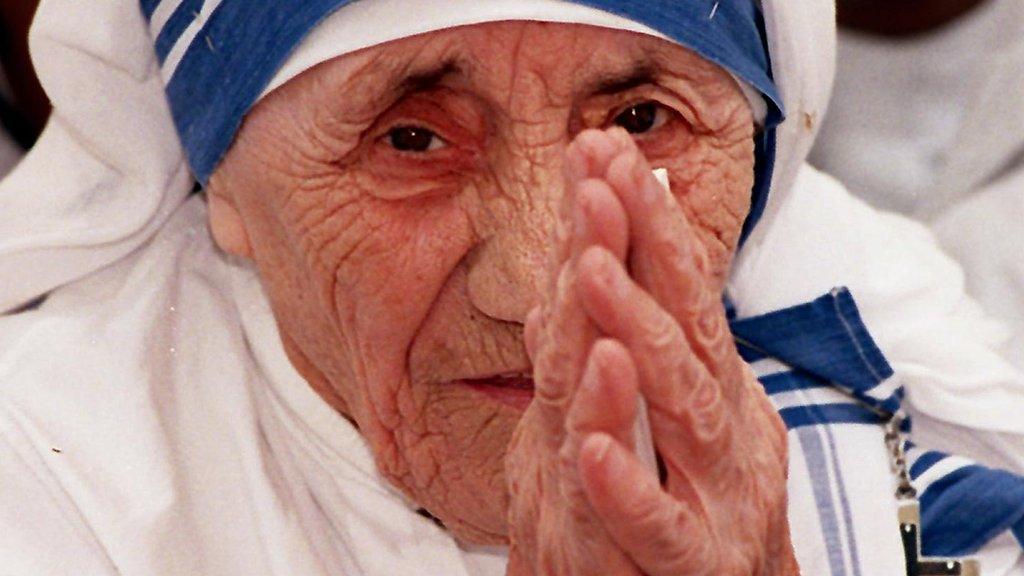Profile: 'Living Saint' Mother Teresa
- Published
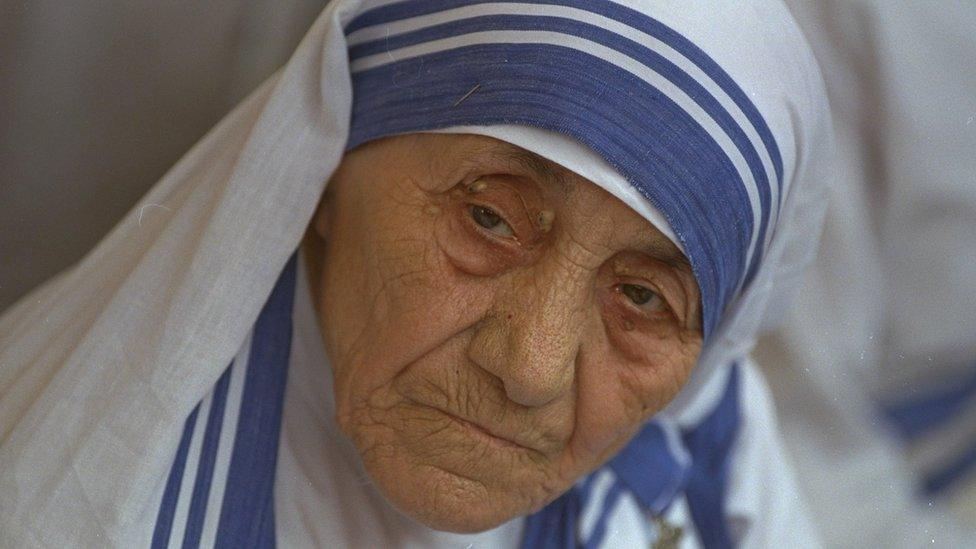
Hundreds of miracles have been attributed to the late Mother Teresa
When she was alive, Mother Teresa was called "a living saint". Now, 18 years after her death, she is on the road to officially holding the title.
Pope Francis has recognised a second miracle attributed to her - the healing of a Brazilian man with several brain tumours in 2008.
This tiny, wizened figure captured the imagination of the world with her dedication to the poor, particularly in the Indian city of Kolkata (Calcutta) where she established her first shelter to cope with the thousands of "pavement people".
No matter how destitute, diseased or repellent they might have been, the poor were welcomed. The dying were afforded a dignity in death.
The order she founded, the Missionaries of Charity, grew to include 3,000 nuns and 400 brothers in 87 countries, tending to the poor and dying in the slums of 160 cities.
In 1979, she accepted the Nobel Peace Prize on behalf of "the throwaway of society". She asked that the grand gala dinner be cancelled and the proceeds be given to the poor of Kolkata.
In 2002, five years after her death, Pope John Paul II judged that the healing of a woman, external suffering from an abdominal tumour was the result of Mother Teresa's supernatural intervention.
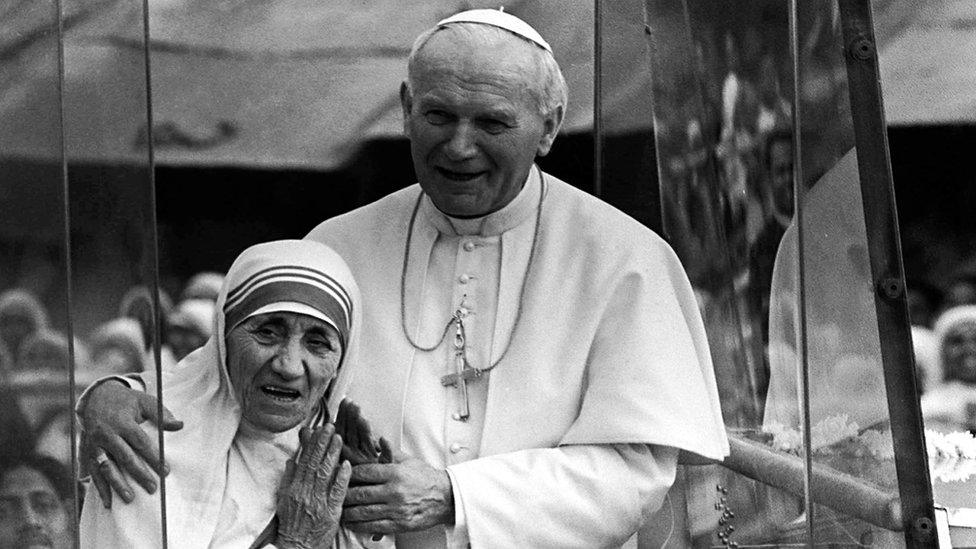
Pope John Paul II beatified Mother Teresa in 2003 - the first step to sainthood
'Call within'
Mother Teresa was born Agnes Gonxha Bojaxhiu, in 1910 in Skopje, now capital of the Republic of Macedonia, which was then part of the Ottoman Empire. Her family were ethnic Albanians, and devout Catholics.
She decided as early as 12 that she wanted to become a missionary in India. At the age of 19, she joined the Irish order of Loreto where she was taught English. In 1929 she was sent to India.
Mother Teresa - she took the name from Therese of Lisieux - began teaching at a school in Darjeeling, a town in the Himalayan foothills. Then, in 1946, amid the communal strife that gripped British-ruled India at the time, she heard her "call within" to help the poor while living among them.
After 10 years helping the destitute in the slums of Kolkata, where 100,000 were homeless, she expanded by opening a hospice in the grounds of a Hindu temple in Kalighat, followed by a home for abandoned children and a refuge for lepers.
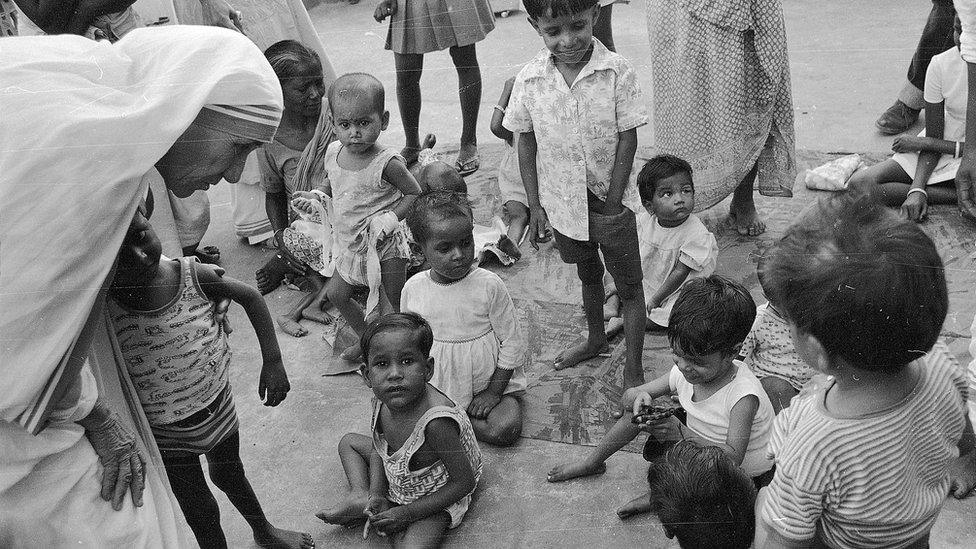
Mother Teresa was awarded the Nobel Peace Prize in 1979 for her work in Kolkata
An ultra conservative
Her work spread throughout India, and her fame grew with it. In 1970, the journalist Malcolm Muggeridge made a film that brought her to the attention of the West.
Muggeridge, an agnostic, was inspired to convert to the Catholic faith. "Words cannot convey how beholden I am to her," he wrote.
Mother Teresa was fervently opposed to contraception and abortion. She told an Oxford conference in 1988 that she would never allow a child entrusted to her care to be adopted by a woman who had an abortion or used contraceptives. "Such a woman cannot love," she said.
This put her at great odds with the feminist movement. Germaine Greer called her "a religious imperialist". The writer Christopher Hitchens also criticised her for her association with dictators such as the Duvaliers in Haiti and Enver Hoxha in Albania.
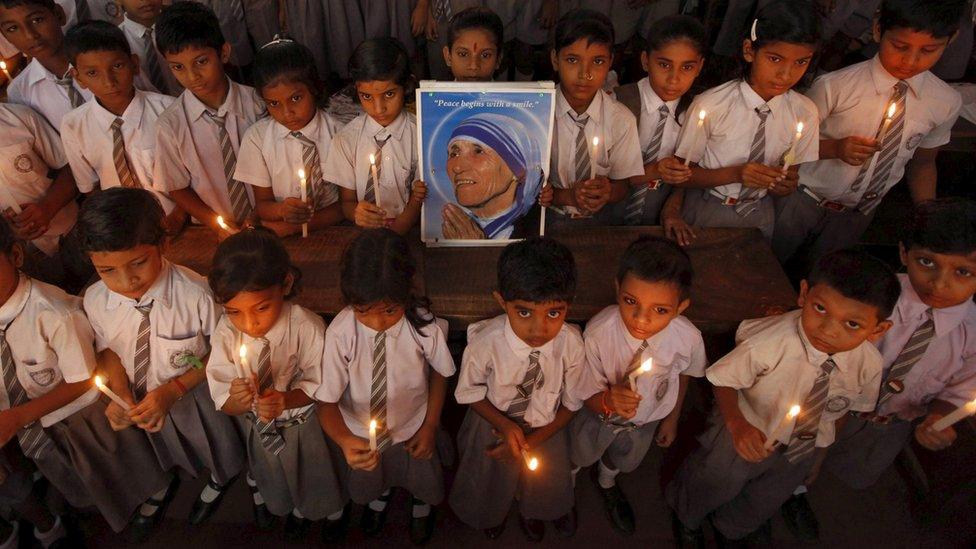
Ceremonies celebrating the life of Mother Teresa are held in Kolkata, where she carried out most of her work
Mother Teresa's view was that if someone offers charity for the poor it should be accepted for their sake regardless of the merits or otherwise of the giver.
Her hardline views on abortion and contraception were welcomed by the socially conservative Pope John Paul II who used Mother Teresa as a spokesperson for papal causes.
Mother Teresa, whose only possessions were a bucket and two saris, came to symbolise love for the unloved and care for the unwanted. In the words of Malcolm Muggeridge, she contributed "something beautiful for God".
- Published18 December 2015
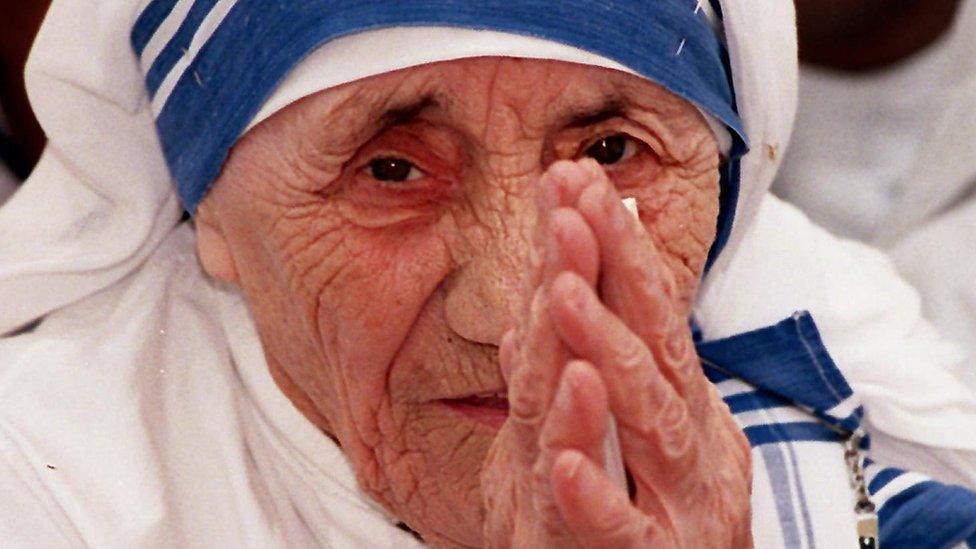
- Published4 September 2016

- Published24 February 2015
